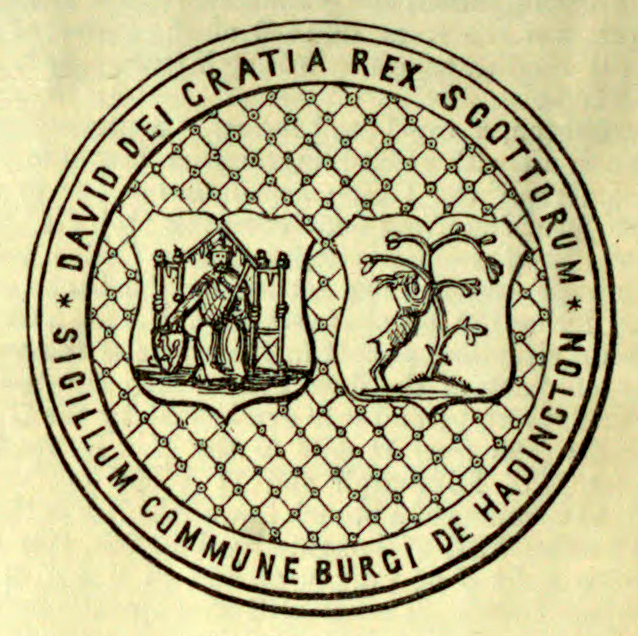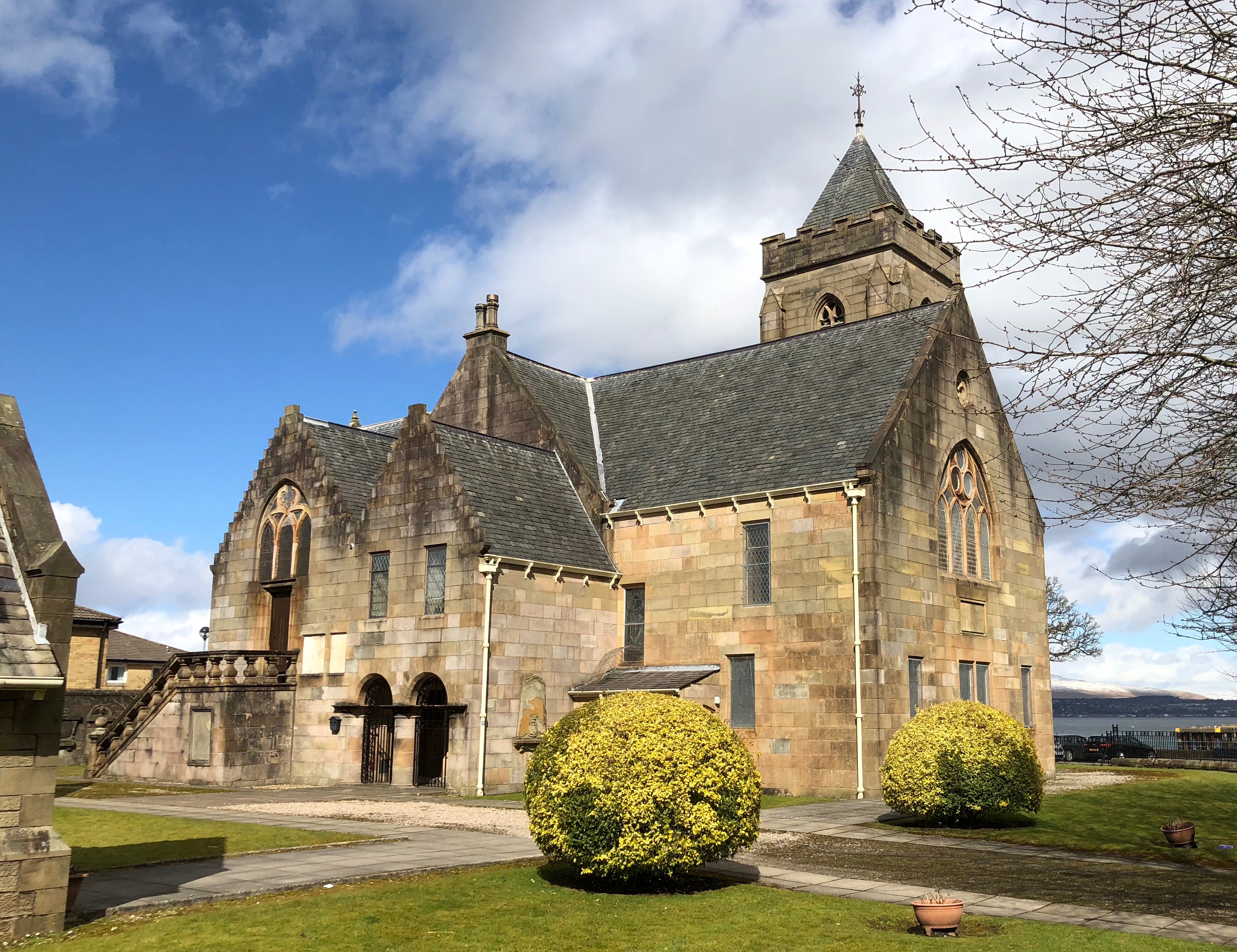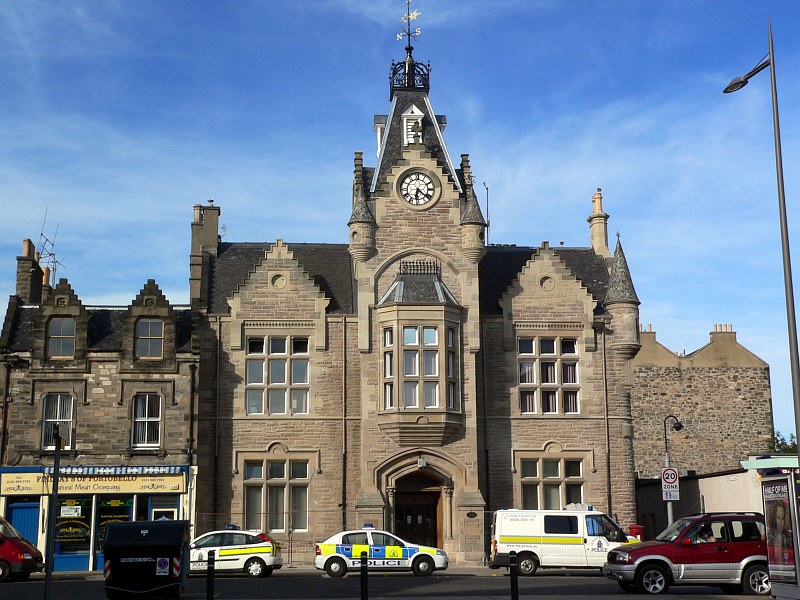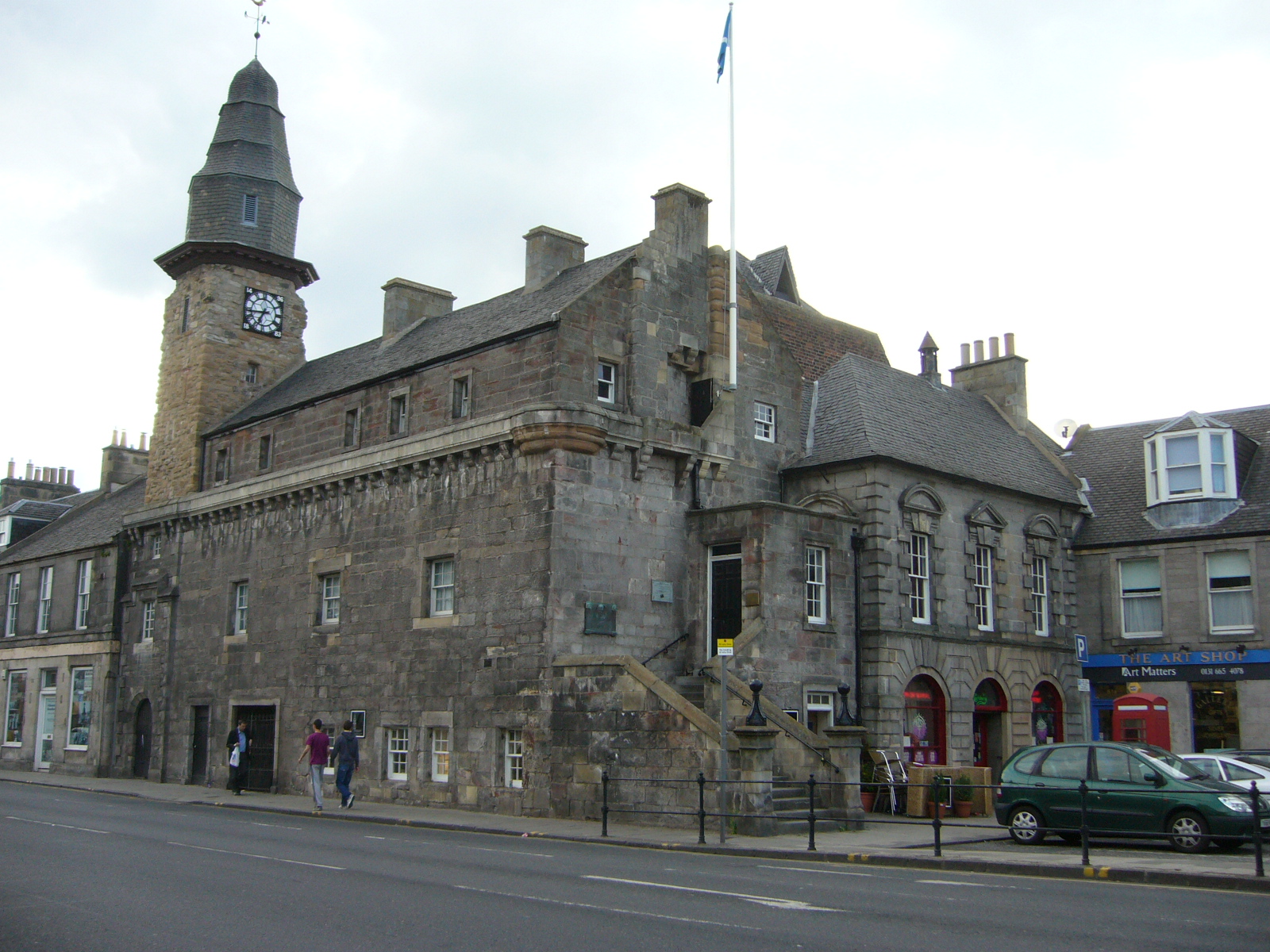|
Police Burgh
A police burgh was a Scottish burgh which had adopted a "police system" for governing the town. They existed from 1833 to 1975. The 1833 act The first police burghs were created under the Burgh Police (Scotland) Act 1833 ( 3 & 4 Will. 4. c. 46). This act enabled existing royal burghs, burghs of regality, and burghs of barony to adopt powers of paving, lighting, cleansing, watching, supplying with water and improving their communities. This preceded the Municipal Corporations Act 1835, which introduced a similar reform in England and Wales, by two years. Forming a police burgh In order for the act to be adopted in any burgh, an application by householders in the town had to be made for a poll to be held. If three-quarters of qualified voters were in favour, the act would come into force in the burgh. Inhabitants were also free to choose which parts of the act to adopt. Boundaries Boundaries for the police burgh were to be set out, which could be extended up to in any dire ... [...More Info...] [...Related Items...] OR: [Wikipedia] [Google] [Baidu] |
Burgh
A burgh ( ) is an Autonomy, autonomous municipal corporation in Scotland, usually a city, town, or toun in Scots language, Scots. This type of administrative division existed from the 12th century, when David I of Scotland, King David I created the first royal burghs. Burgh status was broadly analogous to borough status in the United Kingdom, borough status, found in the rest of the United Kingdom. Following Local Government (Scotland) Act 1973, local government reorganisation in 1975, the title of "royal burgh" remains in use in many towns, but now has little more than ceremonial value. History The first burgh was Berwick-upon-Tweed, Berwick. By 1130, David I of Scotland, David I (r. 1124–53) had established other burghs including Edinburgh, Stirling, Dunfermline, Haddington, East Lothian, Haddington, Perth, Scotland, Perth, Dumfries, Jedburgh, Montrose, Angus, Montrose, Rutherglen and Lanark. Most of the burghs granted charters in his reign probably already existed as settle ... [...More Info...] [...Related Items...] OR: [Wikipedia] [Google] [Baidu] |
Greenock
Greenock (; ; , ) is a town in Inverclyde, Scotland, located in the west central Lowlands of Scotland. The town is the administrative centre of Inverclyde Council. It is a former burgh within the historic county of Renfrewshire, and forms part of a contiguous urban area with Gourock to the west and Port Glasgow to the east. The 2011 UK Census showed that Greenock had a population of 44,248, a decrease from the 46,861 recorded in the 2001 UK Census. It lies on the south bank of the Clyde at the " Tail of the Bank" where the River Clyde deepens into the Firth of Clyde. History Name Place-name scholar William J. Watson wrote that "Greenock is well known in Gaelic as , dative of , 'a sunny knoll. The Scottish Gaelic place-name is relatively common, with another Greenock near Callander in Menteith (formerly in Perthshire) and yet another at Muirkirk in Kyle, now in East Ayrshire. R. M. Smith in (1921) described the alternative derivation from Common Brittonic *, ... [...More Info...] [...Related Items...] OR: [Wikipedia] [Google] [Baidu] |
Portobello, Scotland
Portobello is a coastal suburb of Edinburgh in eastern central Scotland. It lies 3 miles (5 km) east of the city centre, facing the Firth of Forth, between the suburbs of Joppa and Craigentinny. Although historically it was a town in its own right, it is officially a residential suburb of Edinburgh. The promenade fronts onto a wide sandy beach. History Early years The area was originally known as Figgate Muir, an expanse of moorland through which the Figgate Burn flowed, from Duddingston Loch fed by the Braid Burn to the west, to the sea, with a broad sandy beach on the Firth of Forth. The name "Figgate" has been thought to come from an Old English term for "cow's ditch", but the land was used as pasture for cattle by the monks of Holyrood Abbey and the name is more likely to mean "cow road", as in Cowgate in Edinburgh. In 1650 it was the supposed scene of a secret meeting between Oliver Cromwell and Scottish leaders. A report from 1661 describes a race in which twe ... [...More Info...] [...Related Items...] OR: [Wikipedia] [Google] [Baidu] |
Aberdeenshire
Aberdeenshire (; ) is one of the 32 Subdivisions of Scotland#council areas of Scotland, council areas of Scotland. It takes its name from the Shires of Scotland, historic county of Aberdeenshire (historic), Aberdeenshire, which had substantially different boundaries. The Aberdeenshire Council area includes all of the areas of the historic counties of Aberdeenshire and Kincardineshire except the area making up Aberdeen City Council area, as well as part of Banffshire. The historic county boundaries are still officially used for a few purposes, namely land registration and Lieutenancy areas of Scotland, lieutenancy. Aberdeenshire Council is headquartered at Woodhill House in Aberdeen, making it the only Scottish council whose headquarters are located outside its jurisdiction. Aberdeen itself forms a different council area (Aberdeen City). Aberdeenshire borders onto Angus, Scotland, Angus and Perth and Kinross to the south, Highland (council area), Highland and Moray to the west a ... [...More Info...] [...Related Items...] OR: [Wikipedia] [Google] [Baidu] |
Peterhead
Peterhead (; , ) is a town in Aberdeenshire, Scotland. It is the council area's largest settlement, with a population of 19,060 at the 2022 Census for Scotland, 2022 Census. It is the largest fishing port in the United Kingdom for total landings by UK vessels, according to a 2019 survey."Brexit trade deal: What does it mean for fishing?" - BBC News, December 2020 Peterhead sits at the easternmost point in mainland Scotland. It is often referred to as ''The Blue Toun'' (locally spelled "The Bloo Toon") and its natives are known as ''Bloo Touners''. They are also referred to as ''blue mogganers'' (locally spelled "bloomogganners"), supposedly from the blue worsted ''moggans'' or stockings that the fishermen originally wore. Prehistory and archaeology Expansion of the town's landfill led to ...[...More Info...] [...Related Items...] OR: [Wikipedia] [Google] [Baidu] |
Paisley, Renfrewshire
Paisley ( ; ; ) is a large town situated in the west central Lowlands of Scotland. Located north of the Gleniffer Braes, the town borders the city of Glasgow to the east, and straddles the banks of the White Cart Water, a tributary of the River Clyde. It serves as the administrative centre for the Renfrewshire council areas of Scotland, council area, and is the largest town in the counties of Scotland, historic county of the Renfrewshire (historic), same name. It is often cited as "Scotland's largest town" and is the List of towns and cities in Scotland by population, fifth largest settlement in the country, although it does not have city status. The town became prominent in the 12th century, with the establishment of Paisley Abbey, an important religious hub which formerly had control over other local churches. Paisley expanded significantly during the Industrial Revolution as a result of its location beside White Cart Water, with access to the Clyde and nearby ore, mineral and ... [...More Info...] [...Related Items...] OR: [Wikipedia] [Google] [Baidu] |
Argyllshire
Argyll (; archaically Argyle; , ), sometimes called Argyllshire, is a historic county and registration county of western Scotland. The county ceased to be used for local government purposes in 1975 and most of the area now forms part of the larger Argyll and Bute council area. Argyll is of ancient origin, and broadly corresponds to the ancient kingdom of less the parts which were in Ireland. Argyll was also a medieval bishopric with its cathedral at Lismore. In medieval times the area was divided into a number of provincial lordships. One of these, covering only the central part of the later county, was called Argyll. It was initially an earldom, elevated to become a dukedom in 1701 with the creation of the Duke of Argyll. Other lordships in the area included Cowal, Kintyre, Knapdale, and Lorn. From at least the 14th century there was a Sheriff of Argyll, whose jurisdiction was gradually extended; from 1633 the shire covered all these five provinces. Shires gradual ... [...More Info...] [...Related Items...] OR: [Wikipedia] [Google] [Baidu] |
Oban
Oban ( ; meaning ''The Little Bay'') is a resort town within the Argyll and Bute council area of Scotland. Despite its small size, it is the largest town between Helensburgh and Fort William, Highland, Fort William. During the tourist season, the town can have a temporary population of up to over 24,000 people. Oban occupies a setting in the Firth of Lorn. The bay forms a near perfect horseshoe, protected by the island of Kerrera; and beyond Kerrera, the Isle of Mull. To the north are the long low island of Lismore, Scotland, Lismore and the mountains of Morvern and Ardgour. Pre-history and archaeology Humans have used the site where Oban now stands since at least Mesolithic times, as evidenced by archaeological remains of cave dwellers found in the town. Just outside the town, stands Dunollie Castle, on a site that overlooks the main entrance to the bay and has been fortified since the Bronze Age. Just to the north of Oban, at Dunbeg, Dunstaffnage, excavations in 2010, b ... [...More Info...] [...Related Items...] OR: [Wikipedia] [Google] [Baidu] |
Musselburgh
Musselburgh (; ; ) is the largest settlement in East Lothian, Scotland, on the coast of the Firth of Forth, east of Edinburgh city centre. It had a population of as of . History The name Musselburgh is Old English language, Old English in origin, with ''mussel'' referring to Mussel, the shellfish.Musselburgh was famous for the mussel beds which grew in the Firth of Forth; after many years of claims that the mussels were unsafe for consumption, a movement has been started to reestablish the mussel beds as a commercial venture. The ''burgh'' element appears to derive from burh, in the same way as Edinburgh, before the introduction of formal burghs by David I of Scotland, David I. Its earliest Anglic name was ''Eskmuthe'' (Eskmouth) for its location at the mouth of the River Esk, Lothian, River Esk. Musselburgh was first settled by the Roman Britain, Romans in the years following their invasion of Scotland in 80 AD. They built a Inveresk Roman Fort, fort a little inland f ... [...More Info...] [...Related Items...] OR: [Wikipedia] [Google] [Baidu] |
Midlothian
Midlothian (; ) is registration county, lieutenancy areas of Scotland, lieutenancy area and one of 32 council areas of Scotland used for local government. Midlothian lies in the east-central Lowlands, bordering the City of Edinburgh council area, East Lothian and the Scottish Borders. The modern council area was formed in 1975 when the Midlothian (historic), historic county of Midlothian, also known as Edinburghshire, was altered substantially as part of local government reforms; its southern part formed a new Midlothian Districts of Scotland, District within the Local government areas of Scotland 1973 to 1996, Region of Lothian, whilst areas on the peripheries were assigned to other districts and the city of Edinburgh, which had always been autonomous to an extent, was formally separated as the Edinburgh (district), City of Edinburgh District. In 1996 Midlothian became a unitary authority area, using the same name and territory as in 1975. History Midlothian County Council w ... [...More Info...] [...Related Items...] OR: [Wikipedia] [Google] [Baidu] |
Leith
Leith (; ) is a port area in the north of Edinburgh, Scotland, founded at the mouth of the Water of Leith and is home to the Port of Leith. The earliest surviving historical references are in the royal charter authorising the construction of Holyrood Abbey in 1128 in which it is termed ''Inverlet'' (Inverleith). After centuries of control by Edinburgh, Leith was made a separate burgh in 1833 only to be merged into Edinburgh in 1920. Leith is located on the southern coast of the Firth of Forth and lies within the City of Edinburgh council area; since 2007 Leith (Edinburgh ward), it has formed one of 17 multi-member Wards of the United Kingdom, wards of the city. History As the major port serving Edinburgh, Leith has seen many significant events in Scottish history. First settlement The earliest evidence of settlement in Leith comes from several archaeological digs undertaken in The Shore, Leith, The Shore area in the late 20th century. Amongst the finds were medieval wharf ... [...More Info...] [...Related Items...] OR: [Wikipedia] [Google] [Baidu] |
Ayrshire
Ayrshire (, ) is a Counties of Scotland, historic county and registration county, in south-west Scotland, located on the shores of the Firth of Clyde. The lieutenancy areas of Scotland, lieutenancy area of Ayrshire and Arran covers the entirety of the historic county as well as the island of Arran, formerly part of the historic county of Buteshire. Its principal towns include Ayr, Kilmarnock and Irvine, North Ayrshire, Irvine and it borders the counties of Renfrewshire and Lanarkshire to the north-east, Dumfriesshire to the south-east, and Kirkcudbrightshire and Wigtownshire to the south. Like many other counties of Scotland, it currently has no administrative function, instead being sub-divided into the council areas of East Ayrshire, North Ayrshire and South Ayrshire. It has a population of approximately 366,800. The electoral and valuation area named Ayrshire covers the three council areas of East Ayrshire, North Ayrshire and South Ayrshire, therefore covering the whole histo ... [...More Info...] [...Related Items...] OR: [Wikipedia] [Google] [Baidu] |










